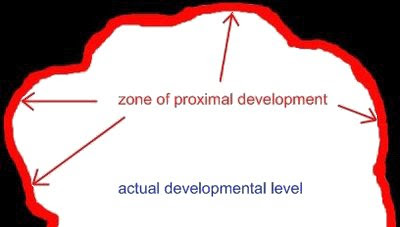

Without frugality, none can be rich,
and with it very few would be poor.
- Samuel Johnson -
and with it very few would be poor.
- Samuel Johnson -
Last week the New Zealand Lotteries Commission handed out over $36,000,000 to the winning ticket held by a syndicate of four people. Before the draw, there was speculation in discussion on radio and television, on the Internet and elsewhere as to what the winners might do with the money during the rest of their lives.
Evidence on the life and history of past multimillion winners suggested that an amazingly large proportion of them managed to spend the lot within less than two years. The adage, “penny wise, pound foolish”, seems to ring true.
Frugal return?
I was brought up in the 50s and 60s. In those years I acquired education enough to understand what was meant by the ‘use-once-throw-away society’. I was a bit of a handyman in my teens. My mother called me Tinkerer. I took apart broken appliances that people had discarded, primarily to see how they’d worked and to establish why they didn’t.
If I managed to fix something, and curiously that happened on occasion, I usually gave it back to its previous owner. There were two reasons for this. One was that my mother disliked me hoarding ‘stuff’. The other was that often I got some small reward for my effort. I still possess an oddly hand-painted vase given to me 50 years ago by a grateful neighbour whose clock I'd mended.
Planned obsolescence?
There came a time when fixing things was more difficult. Clusters of individual components of manufactured goods were gradually replaced with sealed ‘black boxes’ hard to dismantle, difficult to repair and even more challenging to reassemble. They were key to the functionality of the contraption to which they belonged. Apparently they were selected to malfunction one after the other, with perhaps only a few weeks between each carefully planned event.
Replacing a ‘black box’ was unbelievably costly. Most faulty ‘black boxes’ ended up in the landfill still intimately connected to their associated appliances. When considering repair, buying a brand-new version of the appliance was often an attractive option in view of the expense-free term of use guaranteed to the owner.
As more of the componentry in gadgets became modularised, the day-to-day maintenance of the material world I lived in continued to become costlier. There came a need for greater incomes at a time of plenty, when meeting that need was moderately easy to achieve.
Environment of plenty?
Variety became a feature of the available range of manufactured goods. It was essential to meet the demand of every whim of fashion, style, functionality, design and cost. Just take a look at any stretch of motorway during the rush hour. Notice the plethora of brand, shape, size and colour of cars, burning their slow petroleum trails to their destinations.
Society has inherited a legacy – a way of life that’s going to be difficult to maintain. And there’s more. The discarded products of the bygone boom-times are already impinging on the environment of plenty, so the experts say. Embedded in that legacy-way-of-life are philosophies and cultures that are seemingly reflected in what we see on the Internet.
Where did efficiency go?
I tinkered around with computers in the early 80s. One of the golden rules I learnt while writing computer programs in basic, was to do with brevity and efficient use of code. A computer with a random access memory of 640 kilobytes was a luxurious acquisition in those days – and it wasn’t cheap.
Today I upload optimised pix of about 4 Mb each from my digital camera, to an app in the clouds that I didn’t pay for, at least not directly.
We have hand-held devices that boast hundreds of gigabyte memory capacity accessed with a stroke of a finger. We’re told of the coming Graphene chip that promises 100 to 1000 times the speed and capacity of present-day microchips.
The last time I scoured cyberspace for data on the abundance of (free) web2.0 applications, I gathered handfuls of sites. Each of them boasted several dozen to a hundred links to web2.0 applications. Most recently, in my fevered attempt to find a single alternative to PhotoShop, I found dozens of free download offers for applications that claimed most if not all of the functionality I needed.
Time of plenty?
People everywhere celebrate a time of plenty. Most of us find comfort in abundance. In particular, we feel that limited choice is too restrictive,
a way of thinking that, for some, has been tuned by MS apps providing numerous different routes and methods to do exactly the same thing. The principle seems to be, ‘why offer a hundred ways to do something when you can offer it in a hundred and one?’
I wonder about this aspect of the culture that exists in western society. We know that we cannot continue to pursue the abundance that’s invariably presented, recognised, consumed and discarded. We know that continuing to do this returns a series of unwelcome consequences, some of which are perhaps yet to be revealed.
Maybe we should give more thought to frugality?

A Green Pen Society contribution





















































